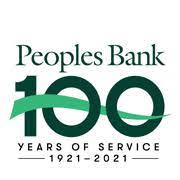Swaziland Dev and Savings Bank Branch Code, BIC Code (Swift) – A Detailed Guide
In the world of modern banking, having a clear understanding of the various codes used to facilitate financial transactions is essential. Two such important identifiers are the branch code and the BIC code (also known as the SWIFT code). These codes play a crucial role in ensuring that transactions are directed to the correct bank branch, whether it’s a domestic or international payment. This article will cover the Swaziland Development and Savings Bank (SDSB) branch code and SWIFT/BIC code, explaining their significance and how they are used in financial operations.
What is a Branch Code?
A branch code is a unique numerical identifier that is assigned to each branch of a bank. This code is used primarily for routing payments and financial transactions to the correct branch. It is typically required for domestic payments, including wire transfers, bill payments, and direct deposits.
For Swaziland Development and Savings Bank (SDSB), like other financial institutions, each branch has its own distinct branch code. This ensures that funds are accurately routed to the appropriate location when you make or receive payments. Whether you are depositing funds, paying a bill, or transferring money to another account, you’ll need the correct branch code for the transaction to be successful.
Why is the Branch Code Important?
- Routing Transactions: The branch code ensures that funds are directed to the correct branch, facilitating the smooth processing of payments.
- Minimizing Errors: Using the correct branch code reduces the chances of misdirected funds, which can cause delays or complications.
- Efficient Processing: The branch code helps to streamline the transaction process, ensuring faster and more accurate processing.
What is a BIC Code (SWIFT Code)?
A BIC code (Bank Identifier Code), also known as the SWIFT code, is an international system that identifies financial institutions for the purpose of conducting international transactions. It ensures that funds are directed to the right institution when performing cross-border transactions, whether it’s for sending or receiving money.
The SWIFT network (Society for Worldwide Interbank Financial Telecommunication) allows banks to communicate and exchange financial information securely. The BIC code helps route these transactions efficiently, ensuring that the correct bank is identified in the process.
A typical BIC/SWIFT code consists of 8 to 11 characters, with each part providing specific details about the bank:
- Bank Code: The first four characters represent the bank’s name.
- Country Code: The next two characters indicate the country of the bank.
- Location Code: The following two characters represent the city where the bank is located.
- Branch Code: The last three characters (if provided) indicate the specific branch.
Swaziland Development and Savings Bank: Branch and SWIFT Codes
For customers of Swaziland Development and Savings Bank (SDSB), understanding both the branch code and SWIFT code is essential for performing financial transactions. Below, we explain these codes for SDSB and their roles in both domestic and international banking.
Swaziland Development and Savings Bank Branch Code
The branch code for SDSB identifies the specific branch of the bank where a transaction is being conducted. If you are making a payment or depositing funds into an account at SDSB, the branch code ensures that the transaction reaches the correct branch. This is particularly important when transferring funds between accounts at different branches of the bank.
Since each branch of SDSB has its own unique branch code, make sure to verify the correct code for the branch where you intend to conduct the transaction. The branch code is required for various banking services, such as:
- Direct Deposits: When you are depositing money into an SDSB account, you’ll need to provide the correct branch code to ensure the funds are deposited into the right account.
- Wire Transfers: For sending money to another SDSB account or to an account at a different bank within Swaziland, the branch code is essential to ensure that the funds are routed accurately.
- Bill Payments: When paying bills through SDSB, the branch code helps direct the payment to the appropriate branch for processing.
Swaziland Development and Savings Bank SWIFT Code (BIC Code)
The SWIFT code (or BIC code) is essential for conducting international transactions. If you are sending or receiving money from abroad, you will need the SWIFT code to ensure that the funds are routed to SDSB.
For SDSB, the SWIFT code is SDVNSZMX.
Let’s break down what each part of the SWIFT code represents:
- SDVN: The bank identifier for Swaziland Development and Savings Bank.
- SZ: The country code for Eswatini (formerly Swaziland).
- MX: The location code, which represents the city or main office of SDSB (Mbabane, the capital city of Eswatini).
The SWIFT code is primarily used for international money transfers, helping banks around the world direct the transaction to SDSB in Eswatini. Without the correct SWIFT code, international payments would not reach the correct bank.
How to Use SDSB Branch and SWIFT Codes for Transactions
Understanding how to use both the branch code and SWIFT code for Swaziland Development and Savings Bank (SDSB) is vital for ensuring smooth banking transactions, whether they are local or international. Below is a guide to using these codes in your banking activities:
1. Domestic Transactions – Branch Code
For domestic transactions within Eswatini, you will need the branch code to facilitate payments between accounts at SDSB or other banks in the country. Here’s how you would use the branch code:
- Deposits: When depositing funds into a specific SDSB account, you will need to know the correct branch code for the branch receiving the deposit.
- Wire Transfers: If you are transferring funds between SDSB branches or to another local bank in Eswatini, the branch code is required to ensure the transaction is directed to the correct branch.
- Bill Payments: For SDSB bill payments, the correct branch code is necessary to ensure the payment reaches the appropriate branch.
2. International Transactions – SWIFT Code
For international transactions, the SWIFT code is necessary to direct funds to SDSB. Here’s how you would use the SWIFT code:
- International Wire Transfers: When sending or receiving money across borders, you will need to provide SDSB’s SWIFT code to ensure that the funds are correctly routed to the bank.
- Cross-Border Payments: Whether paying for goods or services abroad or receiving an international payment, the SWIFT code is required for the smooth transfer of funds.
- Foreign Currency Transactions: SWIFT codes are essential when converting foreign currencies or sending payments in different currencies.
Security: The Role of Branch and SWIFT Codes in Financial Transactions
Both the branch code and SWIFT code are integral to the security of financial transactions. Here’s how these codes ensure that your money is safely sent and received:
- Accuracy: These codes help direct transactions to the correct bank and branch, ensuring that funds are accurately routed to the intended recipient.
- Fraud Prevention: Using the correct codes ensures that the transactions are legitimate and reduces the chances of fraud or unauthorized transfers.
- Compliance: The SWIFT system follows global banking regulations, which ensures that cross-border payments meet the necessary compliance standards.
Understanding the Swaziland Development and Savings Bank (SDSB) branch code and SWIFT code is essential for anyone looking to make domestic or international transactions. Whether you are depositing funds, making payments, or sending money abroad, these codes play a critical role in ensuring the accuracy, security, and speed of your transactions. Always use the correct branch code for local transactions and the correct SWIFT code for international transactions to ensure your funds are routed efficiently.



